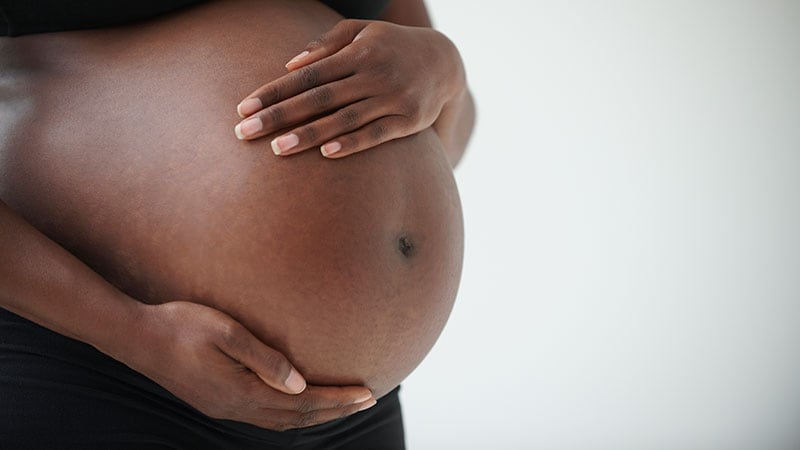How long should a woman wait before becoming pregnant again? According to the World Health Organization (WHO), it is advisable to wait at least 24 months between childbirth and a new pregnancy. But a study published in February of this year in The Lancet Regional Health — Americas, using data from more than 4.7 million live births in Brazil, suggests that this recommendation should be individualized, considering factors such as maternal obstetric history.
Researchers from the Federal University of Grande Dourados (UFGD), Oswaldo Cruz Foundation, São José do Rio Preto Medical School, Federal University of Bahia, and the London School of Hygiene and Tropical Medicine in the United Kingdom used a birth cohort from the Center for Data Integration and Knowledge for Health, which combines data from the Ministry of Health’s Information System on Live Births (SINASC) and from a cohort of 100 million Brazilians.
In total, the analysis included information on 3,804,152 women and 4,788,279 births. All participants had at least two consecutive live births.
Most of interpregnancy intervals, ie, the difference between the previous childbirth and the subsequent conception, ranged from 23 to 58 months (39.1%). Extreme intervals of < 6 months and > 120 months occurred in 5.6% and 1.6% of cases, respectively.
Regarding adverse outcomes, the research indicated that, in the general population, small-for-gestational-age (SGA) babies were observed in 8.4% of subsequent births, while low birth weight (LBW) occurred in 5.9% and preterm birth in 7.5%.
Interpregnancy Interval and SGA Risk
The authors noted that the risk for subsequent adverse outcomes increased with extreme interpregnancy intervals, with SGA being the only exception. In this case, women who had an interval between the previous childbirth and the subsequent conception > 120 months had a lower risk for SGA.
According to João Guilherme Tedde, a medical student at UFGD and the first author of the study, similar patterns (extremely long interpregnancy intervals associated with a lower risk for subsequent SGA) have been described in the literature. In an interview with Medscape, he explained some hypotheses that could explain this phenomenon.
According to the researcher, the finding may reflect the distinct risk profile of mothers who wait a very long time to conceive again. “This group, composed of older women, likely has a higher prevalence of health problems, such as diabetes and obesity, which are known risk factors for having large-for-gestational-age (LGA) babies,” he said. He also highlighted the fact that the study showed that the risk for LGA also increased as the interval between pregnancies grew.
Another hypothesis suggested by the author is the possible occurrence of events between pregnancies, such as miscarriages or stillbirths. According to him, women who have experienced these events between two consecutive pregnancies may have falsely increased interpregnancy intervals, since miscarriages and stillbirths (which are considered conceptions) are not counted in SINASC.
“Thus, the lower occurrence of SGA in the group with very long intervals may reflect a competition of events between stillbirths or miscarriages and live SGAs,” he said.
Previous and Subsequent Adverse Events
The research also showed that the risks for subsequent SGA, LBW, and preterm birth were higher among women with a history of adverse events in previous pregnancies.
Furthermore, the authors noted that the previous occurrence of adverse outcomes seems to “have a more significant impact on the outcome of the current pregnancy than the interpregnancy interval.”
“We found that, for women with the same interpregnancy interval (say < 6 months), but with different obstetric history (zero previous events vs one event), the absolute risk for subsequent adverse outcomes increased much more than when we change only the duration of the interval in a group with the same number of previous adverse events," said Tedde.
There is still no convincing explanation for this fact, he said, since the cause-and-effect relationship between interpregnancy intervals and perinatal events is not clear. But the obstetrics literature generally shows that among the main risk factors for an adverse event is the previous occurrence of the same event. This effect could be related to living conditions and maternal habits, genetics, epigenetics, among others.
The researcher observed that this study is one of the largest in terms of sampling to investigate how maternal obstetric history can modulate the effect of interpregnancy interval on the risk for adverse outcomes in subsequent pregnancies.
The findings of the research published this year reinforce the importance of individualizing recommendations regarding interpregnancy intervals, considering factors such as maternal obstetric history. However, the author warns that it is still too early to point out the “best” interval for each situation.
“We need more studies that reproduce our findings and that expand the analyzed outcomes to also include those of interest to the mother, such as maternal mortality,” he concluded.
This story was translated from the Medscape Portuguese edition using several editorial tools, including AI, as part of the process. Human editors reviewed this content before publication.
Source link : https://www.medscape.com/viewarticle/how-long-should-woman-wait-before-becoming-pregnant-again-2024a10007l9?src=rss
Author :
Publish date : 2024-04-19 11:09:07
Copyright for syndicated content belongs to the linked Source.
